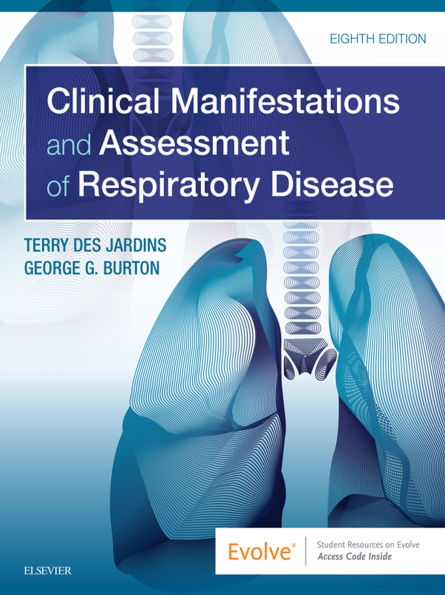Table of Contents
PART 1: Assessment of Cardiopulmonary DiseaseSECTION I: Bedside Diagnosis 1. The Patient Interview 2. The Physical Examination3. The Pathophysiologic Basis for Common Clinical Manifestations SECTION II: CLINICAL DATA OBTAINED FROM LABORATORY TESTS AND SPECIAL PROCEDURES—Objective Findings 4. Pulmonary Function Testing 5. Blood Gas Assessment 6. Assessment of Oxygenation7. Assessment of the Cardiovascular System 8. Radiologic Examination of the Chest 9. Other Important Tests and Procedures SECTION III: THE THERAPIST-DRIVEN PROTOCOL PROGRAM—THE ESSENTIALS 10. The Therapist-Driven Protocol Program 11. Respiratory Insufficiency, Respiratory Failure and Ventilatory Management Protocols 12. Recording Skills and Intra-Professional Communication PART II: Obstructive Lung Disease 13. Chronic Obstructive Pulmonary Disease, Chronic Bronchitis and Emphysema 14. Asthma 15. Cystic Fibrosis16. Bronchiectasis PART III: Loss of Alveolar Volume 17. Atelectasis PART IV: Infectious Pulmonary Disease 18. Pneumonia, Lung Abscess Formation and Important Fungal Diseases 19. Tuberculosis PART V: Pulmonary Vascular Disease 20. Pulmonary Edema 21. Pulmonary Vascular Disease: Pulmonary Embolism and Pulmonary Hypertension PART VI: Chest and Pleural Trauma 22. Flail Chest 23. Pneumothorax PART VII: Disorders of the Pleura and of the Chest Wall 24. Pleural Effusion and Empyema 25. Kyphoscoliosis PART VIII: Lung Cancer 26. Cancer of the Lung: Prevention and Palliation PART IX: Environmental Lung Diseases 27. Interstitial Lung Diseases PART X: Diffuse Alveolar Disease 28. Acute Respiratory Distress Syndrome PART XI: Neuro-Respiratory Disorders 29. Guillain-Barre Syndrome 30. Myasthenia Gravis 31. Respiratory Insufficiency in the Patient with Neuro-Respiratory Disease PART XII: Sleep-Related Breathing Disorders 32. Sleep Apnea PART XIII: Newborn and Early Childhood Cardiopulmonary Disorders 33. The Newborn Disorders34. Pediatric Assessment, Protocols, and PALS Management35. Meconium Aspiration Syndrome36. Transient Tachypnea of the Newborn37. Respiratory Distress Syndrome 38. Pulmonary Air Leak Syndrome39. Respiratory Syncytial Virus Infection (Bronchiolitis)40. Chronic Lung Disease of Infancy41. Congenital Diaphragmatic Hernia42. Congenital Heart Disease43. Croup and Croup-like Syndromes: Laryngotracheobronchitis, Bacterial Tracheitis and Acute Epiglottitis PART XIV: Other Important Topics 44. Near Drowning/Wet Drowning 45. Smoke Inhalation, Thermal Injuries, and Carbon Monoxide IntoxicationTentative (based on current edition) Appendix ISymbols and Abbreviations Commonly Used in Respiratory PhysiologyAppendix IIAgents Used to Treat Bronchospasm and Airway InflammationAppendix IIIAntibioticsAppendix IVAntifungal AgentsAppendix VMucolytic and Expectorant AgentsAppendix VIPositive Inotropes and VasopressorsAppendix VIIDiuretic AgentsAppendix VIIIThe Ideal Alveolar Gas EquationAppendix IXPhysiologic Dead Space CalculationAppendix XUnits of MeasureAppendix XIPoiseuille's LawAppendix XIIPCO2/HCO3_/pH NomogramAppendix XIIICalculated Hemodynamic MeasurementsAppendix XIVDuBois Body Surface Area ChartAppendix XVCardiopulmonary ProfileAppendix XVIAnswers to Self-Assessment Questions GlossaryIndex



